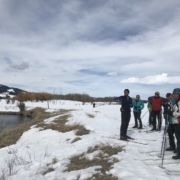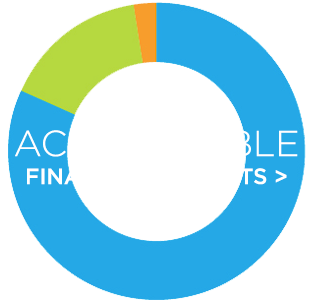Family Conservation on Fox Creek
“Our family has come to love this land. Enamored with its Teton views and spring creeks, we acquired the property in the late 1990s,” Nancy Huntsman shared with us. “In the spring before he passed away in 2012, my husband, Blaine, wrote to his family, ‘the land and its critters have increasingly enticed us with enduring experiences we couldn’t have foreseen when we began our journey.’ As a family, we made a deliberate choice toward stewardship and conservation. We hope that the expanded easements on Fox Creek Ranch will better protect the wildlife and rural values that originally beckoned us to Teton Valley.” The family has permanently conserved 220 acres of their Fox Creek Ranch and has significantly invested in restoring the land since taking ownership of the ranch about 30 years ago.
The Huntsman’s property adjoins almost 3,000 acres of permanently conserved private land held in easements by the Teton Regional Land Trust. It is also adjacent to 251 acres of land owned and managed by the Idaho Department of Fish and Game, known as the Fox Creek East and West, which provide access points to the headwaters of the Teton River.
Historically, the ranch was used for livestock grazing and hay production, and today the property is still an operating ranch, but the restored riparian areas and wetlands are no longer grazed. Improving fish and wildlife habitat and associated recreation opportunities are principal goals of the Huntsman family. They have transformed the management of the property and have undertaken large-scale restoration to improve aquatic, riparian, wetland, and upland habitats. The family has restored and enhanced over two miles of Fox Creek and a half-mile of Little Fox Creek, planted thousands of willows and other native plants along these creeks and has created a series of three wetland ponds.
Little Fox Creek is spring-fed and originates about one mile outside of the property and flows through the northern portion of the ranch before reaching Fox Creek which is a major tributary to the Teton River. Fox Creek is found to be crucial for the conservation of Yellowstone cutthroat trout (YCT) in the Teton Basin. It is one of only three large tributaries in the Teton Valley that still shelters the redds, spawning nests, of YCT. They are an important native fish species in the Greater Yellowstone providing a significant source of food for an estimated 16 species of birds and mammals including bear, river otter, and mink. Because their populations have declined throughout their natural range, state and federal wildlife agencies, as well as non-governmental organizations, have invested in their conservation. They also play an important role in east Idaho’s world-class trout fishery.
In addition to the creeks, a series of enhanced wetland ponds lie in the southern portion of the ranch. The primary function of the ponds was initially water storage. However, since the wetland ponds and associated vegetation have become well established over the past 12 years, they have come to provide significant wildlife habitat for many bird species. In addition to waterfowl, key species including Bobolink, Long-billed Curlew, Sandhill Crane, and Trumpeter Swan can be found thriving on Fox Creek Ranch’s ponds, creeks, and meadows.
Renee Hiebert, the Land Trust’s Conservation Specialist who has worked with the Huntsman family over the years, observed that “It’s encouraging to see how connection to a piece of land can inspire a family to think bigger picture; not just about the current generations, but also about the future generations and their relationship to the land, as well as the land’s future as a part of the family”. Current ownership of Fox Creek Ranch consists of eight Huntsman Family siblings and Nancy Huntsman.
Teton Regional Land Trust has worked with partner organizations and willing landowners for the last thirty years to protect over 36,000 acres through conservation easements and other voluntary conservation options. A conservation easement is a voluntary legal agreement that allows for continued private property ownership, farming and ranching of properties as well as limited residential construction, but permanently restricts the amount and type of future development.



